Arturia’s first foray into integrated software and hardware has arrived, effectively packing the V Collection into a standalone keyboard. We turn to guest reviewer Benjamin Weiss for an independent perspective on how this instrument performs.
Benjamin Weiss is an ideal writer to tackle this, too, as he’s been on both sides of the fence—a long-time reviewer and music tech journalist (in German) and a hardware and software instrument maker, including work at Ableton and Native Instruments. So I’m glad to turn to that experience as a live musician and designer. -Ed.
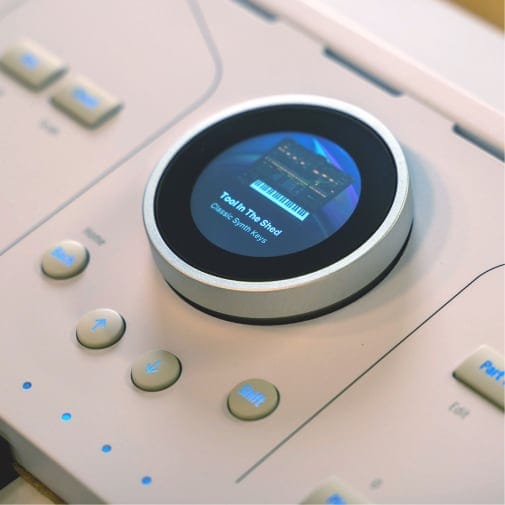
Wheel of Fortune
Arturia’s AstroLab first turned heads by using a UI element that wasn’t as expected on a musical instrument. The Navigation Wheel looked, at first blush, very much like a part of a household device. Our home washing machine actually has it, minus the built-in display. Even though it was ridiculed by many in the interwebs, that wheel turns out to be surprisingly well-suited for its job, but more on that later.

What is AstroLab?
Let’s start with what AstroLab is not. It is not an embedded system that allows you to run all Arturia’s provided engines with access to all parameters at all times — the way a Nord Modular once did, for example. AstroLab is not meant for the knob-twiddler but rather for the keyboard instrumentalist.
But it’s also not a classic workstation: it features only a minimal (if fun) MIDI looper but no arranger of any sort. This means it’s hard to compare to most of the other stage keyboards/workstations that are currently around, such as Yamaha Montage, MPC Key, Roland Phantom, or one of the Clavia Nord Keyboards. Most of these alternatives are also considerably more expensive.
Astrolab is not meant for the knob-twiddler but rather for the keyboard instrumentalist.
Hardware and haptics
While the design might not be everyone’s cup of tea, the hardware is well-built and sturdy. It feels like something you can take on the road without running the risk of breaking it easily. It’s nonetheless very portable, at roughly 10 kg.
The AstroLab has a semi-weighted 61-note keyboard with velocity and aftertouch, LEDs on top of each key, pitch and mod wheel, octave up and down buttons, a transport section for the MIDI looper, buttons for arp, chord, and scale, and a bunch of buttons for direct access to Browser categories such as piano, e-piano, pads, etc. There are four knobs for macros and four knobs for effects, two for Insert FX and one each for delay and reverb.

Overall, this is a pretty basic set of UI elements, evenly spread across the big surface, all closely tailored to the functionality of the AstroLab and Analog Lab Pro software. The keybed feels nice and precise, although it needs a tiny bit of leaning in to trigger the aftertouch properly; the knobs and buttons provide precise haptic feedback and are placed where expected. In the center, there is the circular Navigation Wheel for navigation, browsing, and accessing settings. Once you get used to turning it — where you press it doesn´t really matter, although the GUI suggests otherwise — the wheel is unexpectedly useful and intuitive. The basic functionality of each patch is easy enough to edit from the hardware; as soon as you dive deeper, editing on the computer in Analog Lab Pro is the way to go.
The wheel is unexpectedly useful and intuitive.

Analog Lab Pro
While it might feel counter-intuitive at first, if you already own Arturia hardware and are used to the MIDI Control Center, it makes sense that the AstroLab is using Analog Lab Pro as a hub, since it is more or less the physical representation of the software.
Analog Lab Pro covers most of Arturia’s sound and effect engines based on the V Collection 9 and their wavetable instrument, Pigments. Support for the current version, V Collection X, will soon follow.
In a way, Analog Lab Pro is the ready-to-play keyboard in Arturia’s arsenal, representing the capabilities of the V Collection – but with the significant ability to actually access the sound engines themselves, including the same DSP and modeling you have on the desktop software. AstroLab comes with more than 1300 presets stored on AstroLab; that takes up only a small portion of the 20 GB onboard storage, so there is plenty of room to create your own patches.
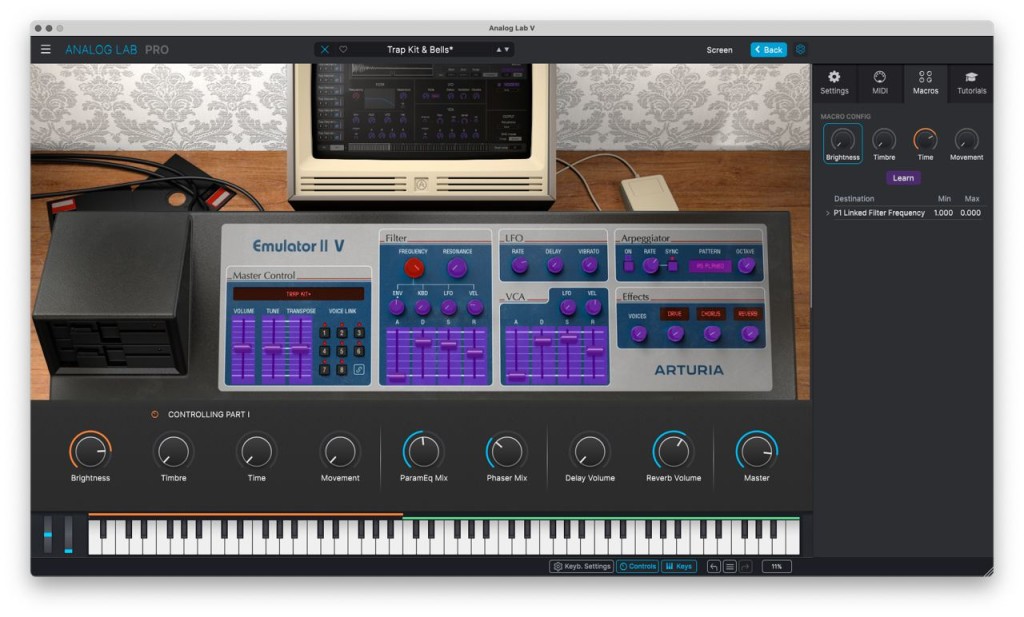
Arturia promises to release new presets regularly. An online shop integrated into Analog Lab and the companion app AstroLab Connect provides preset content and already contains a large selection of sound packs.
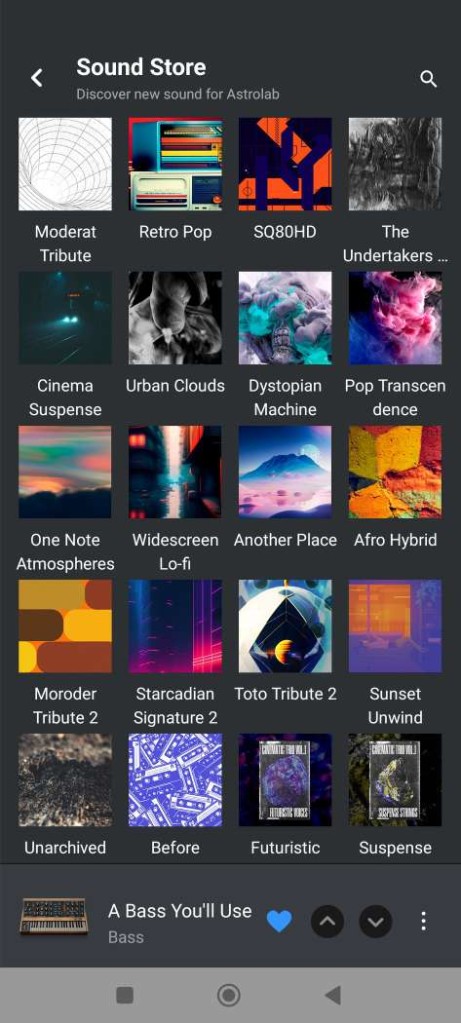
The caveat is that if you want to edit presets in detail beyond the parameters provided in Analog Lab, you’ll need a license for V Collection and Pigments on top of AstroLab. You can only access an instrument’s detail view if you own it. [Ed. See below for loopop’s video – at 25:00 he points out that you can access additional parameters via Analog Lab by using the 9 knobs + 9 faders MIDI controller map. I’d say that’s not so “sneaky” as it is a standard feature of Analog Lab!]
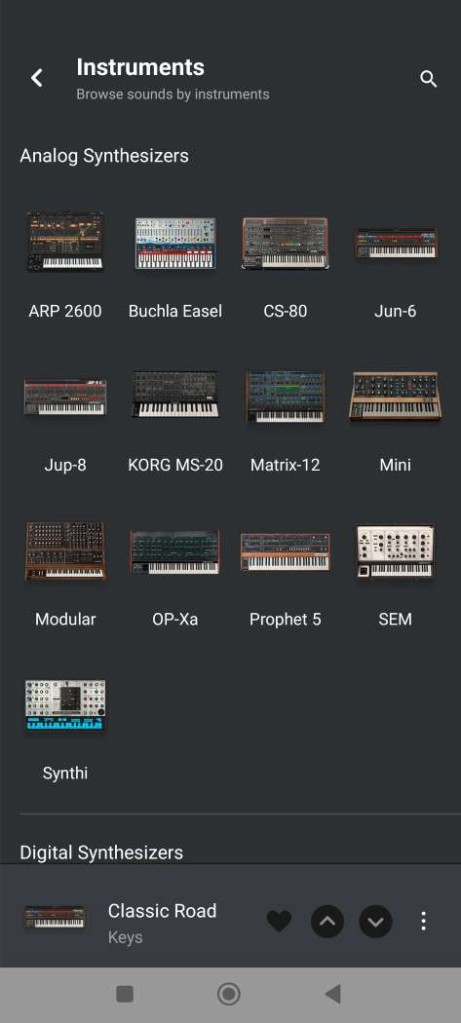
Browsing, organising, and editing via AstroLab Connect
Browsing 1300 patches is a formidable task, and while there are meaningful ways of sorting and accessing categories via dedicated buttons, navigation is still quicker via either the desktop software or the free companion app AstroLab Connect for iOS and Android. Since AstroLab is also a WiFi hotspot, you can pair your mobile iOS device with AstroLab to browse and organize presets or even enter the store for more presets. This opens up an easier way to search for patches by name and organize your patches.
Creating patches
Using the software, it’s easy to edit and prepare presets on the computer in advance and then send them over to AstroLab later. You can use up to two sounds at once, split by keyboard range or layered. Each of the patches can have separate macros for the four Macro knobs, Brightness, Timbre, Time, and Movement.
These macros can control multiple assigned parameters at once with the ability to specify range and minimum/maximum values, and even to apply an envelope to them. If you set them up properly, you can meaningfully control quite a few parameters with just four knobs.
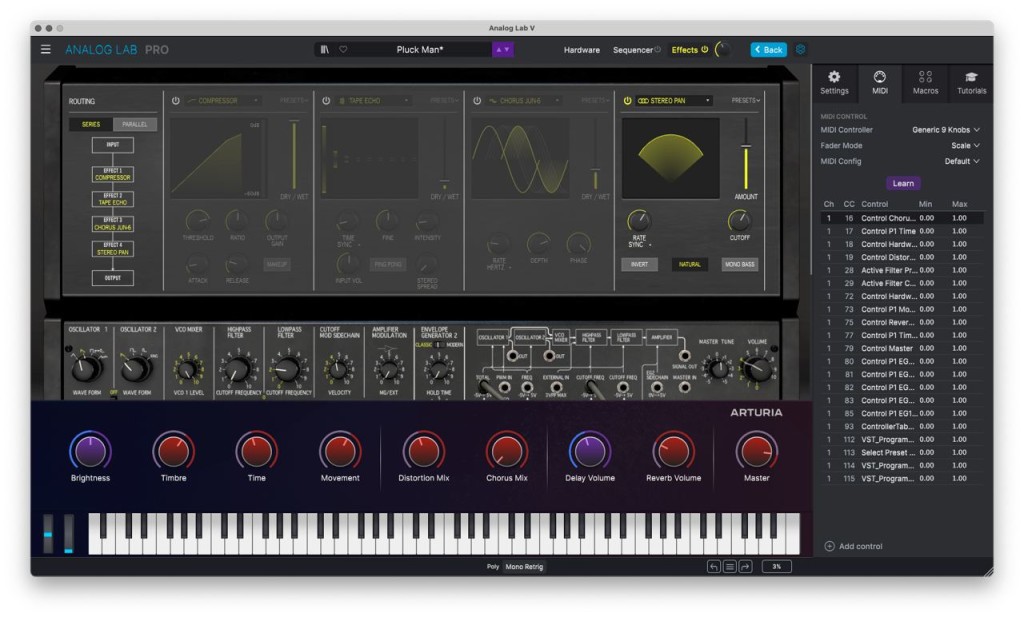
For effects, AstroLab comes with two configurable insert FX, a dedicated delay, and a reverb with multiple engines for each.
While it’s also possible to edit the core features of the presets on AstroLab, it’s naturally way easier on the computer or using AstroLab Connect. The Playlist feature allows you to organize your patches for a gig by Songs.
You can meaningfully control quite a few parameters with just four knobs.
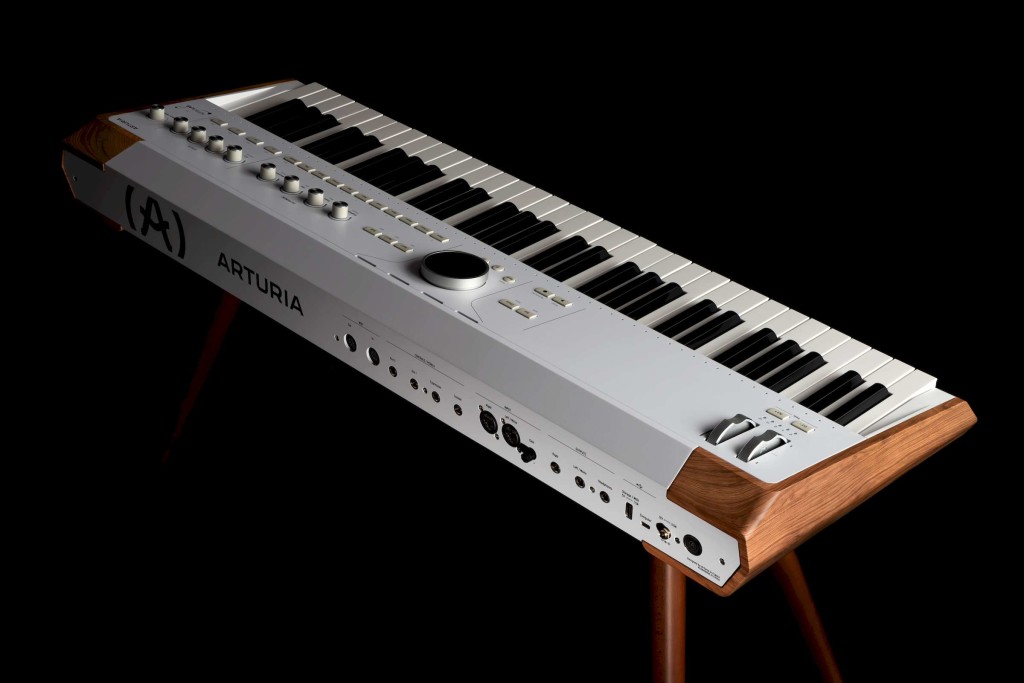
Connectivity and I/O
There are quite a few physical ports to connect AstroLab to its environment: sustain, expression, two pedal ports, two MIDI ports, USB-C to connect to a computer, USB-A for access to a USB drive or MIDI device, 6.35mm minijack stereo output and headphone out as well as a stereo Neutrik input that can be used for a microphone feeding into the vocoder. A nice addition is basic Bluetooth audio support, which allows you to play along any music from a phone.
Limitations
The AstroLab currently mirrors V Collection 9 and Pigments but will soon be upgraded to V Collection X. Depending on the engine used, there are some limitations to polyphony, as well: while instruments based on samples or physical modeling offer up to 48 voices of polyphony, polyphonic synth engines are restricted to 8 voices or monophonic operation. This doesn´t really matter in real life since most of the original polyphonic synths emulated in the V Collection couldn’t achieve more in the first place. One little thing to add here is that currently, there is a short but noticeable lag when switching between presets; this might be fixed by an update in the future. [Ed.: The good news here is you don’t have any click or dropout in sound – but there is a little lag in getting to the next sound.]
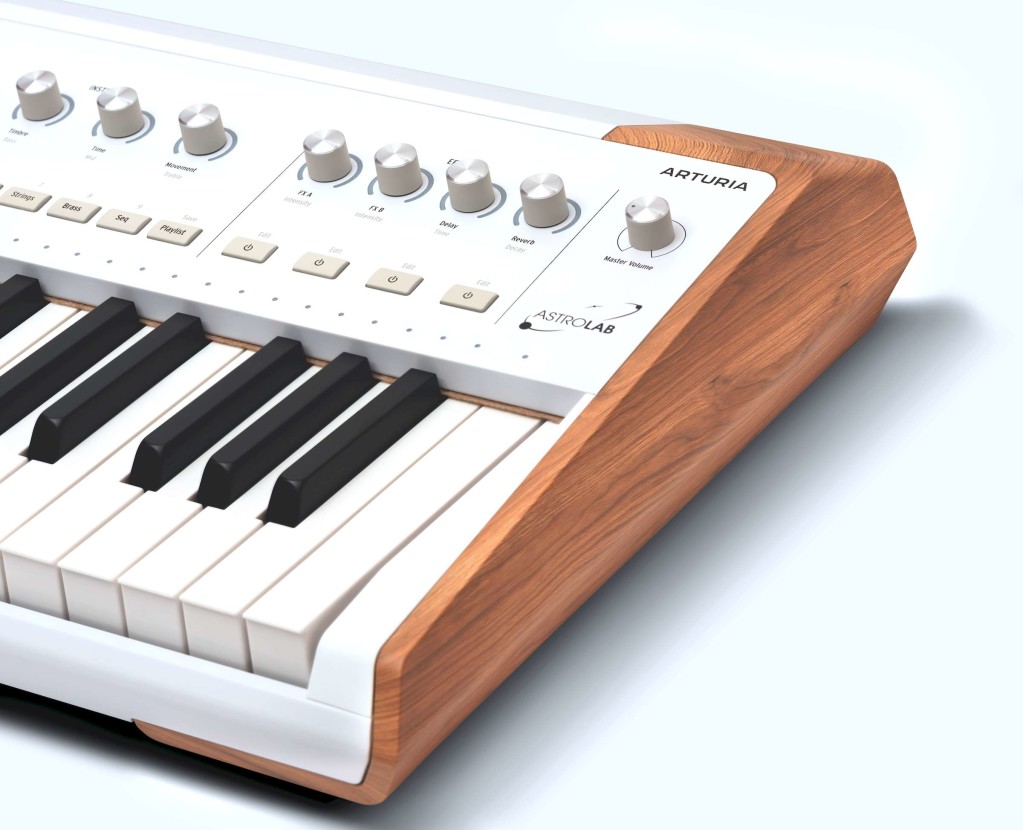
Who is it for?
The main target group of the AstroLab will be keyboard players who like to take the sounds they create in the studio on the road and perform with them on stage. Arturia themselves state that it is primarily a stage keyboard. There is also a use case for keyboardists in the studio who you don’t want to use a computer or just want to quickly put together a demo with your playlists. The AstroLab helps do that without going down the rabbit hole of endless preset browsing – or interrupting creative flow with too many distractions and choices on the computer.
The clearly structured interface also makes it easy and intuitive to use AstroLab without reading the manual first.
AstroLab is a nice showcase of how a dedicated instrument with a clearly defined feature set can turn out: tailored to the stage keyboard player, it serves its purpose nicely and efficiently. It allows you to have fun with the vast amount of Arturia presets as well as those you create yourself, with some basic sound design possibilities onboard. You’ll still get more “bang for the buck” out of the combination of MIDI controller and computer, but you’ll have to drag the computer with you on stage instead of playing an actual instrument.
Now that Arturia has demonstrated they can put all their engines on dedicated hardware, we’ll see if they follow up AstroLab with other hardware for other use cases. So at least for those who want the V Collection instruments in a different form and shape, with more knobs and faders, or a smaller form factor, or even a full-blown modular system – the effectiveness of AstroLab offers some hope.
Price: 1599 Euro
https://www.arturia.com/products/hardware-synths/astrolab-61/overview
Second take: Ed. It’s clear Arturia didn’t make AstroLab for everyone. But by going with something simpler, they’ve built a stage instrument that is insanely competitive on price – for anyone wanting the V Collection and Pigments sounds on the go without lugging a computer. And its simple operation is appealing, since it isn’t really trying to compete with the computer. I’d be curious to see an AstroLab XL with more controls, but there is also a good case here that purpose-built standalone hardware can carve out a niche. And as Benjamin says, if this is successful, I wouldn’t be surprised to see more standalone hardware with different key configurations or even use cases. We’ll see. Of course, for the rest of us, there’s always still the computer and MIDI combo, and Arturia has us well covered there, too…
There are various video reviews out there; loopop’s I thought was the most comprehensive and fair.
More sounds: